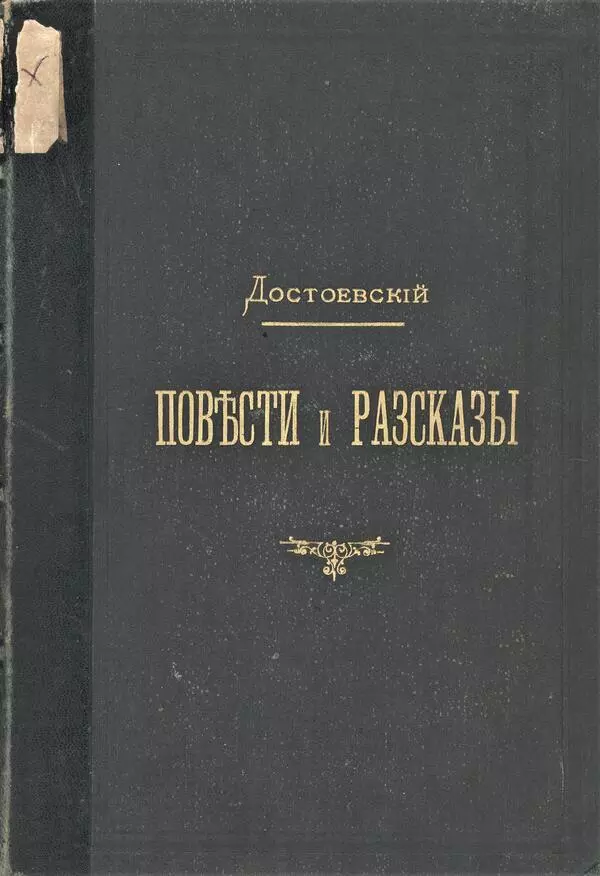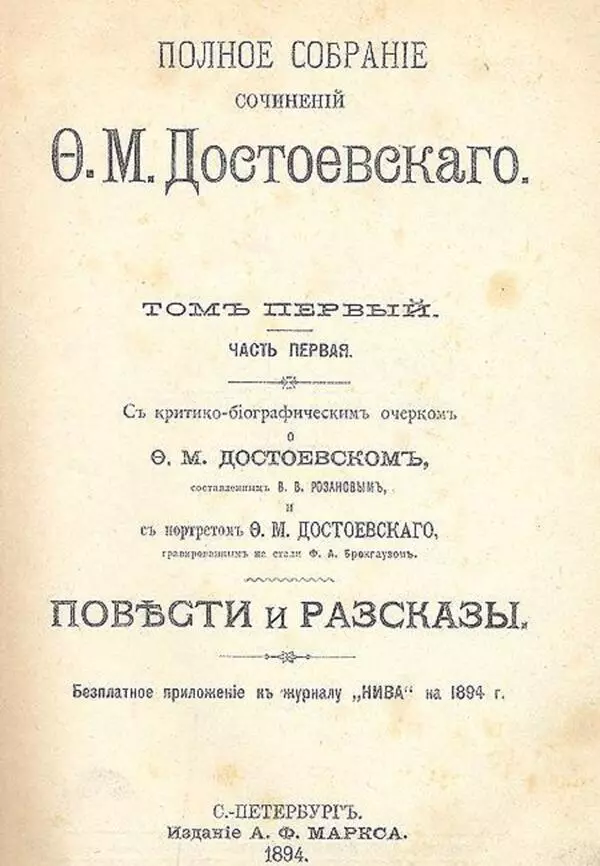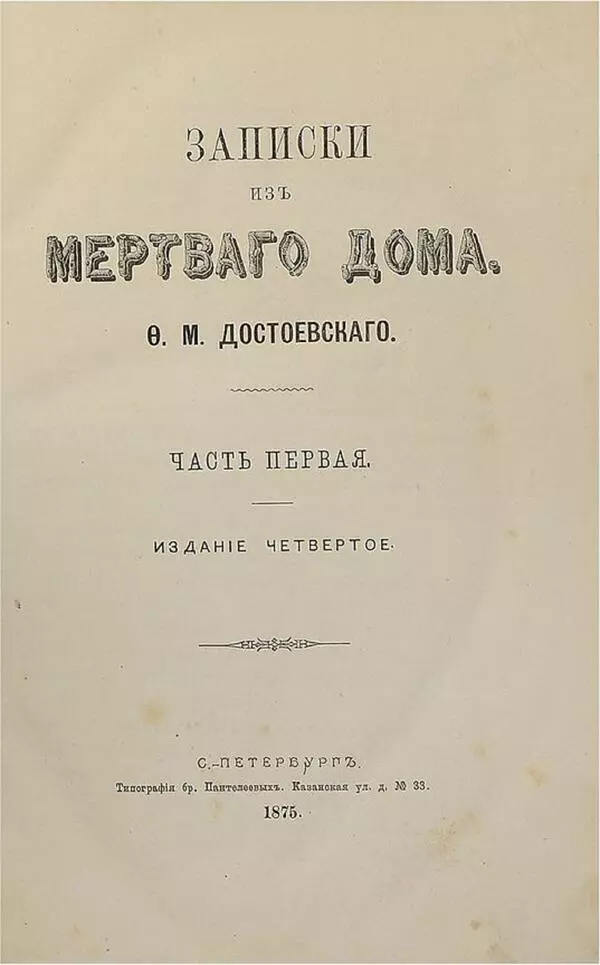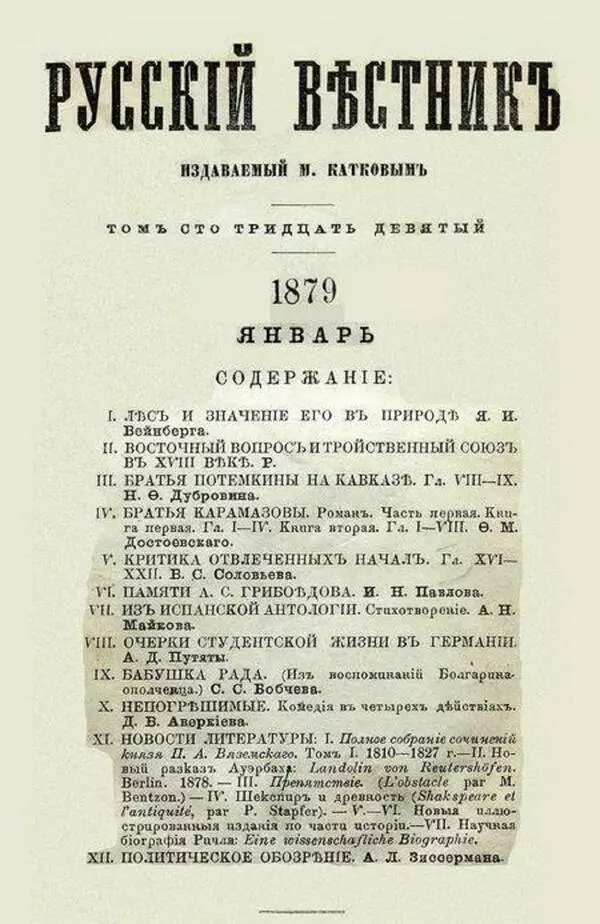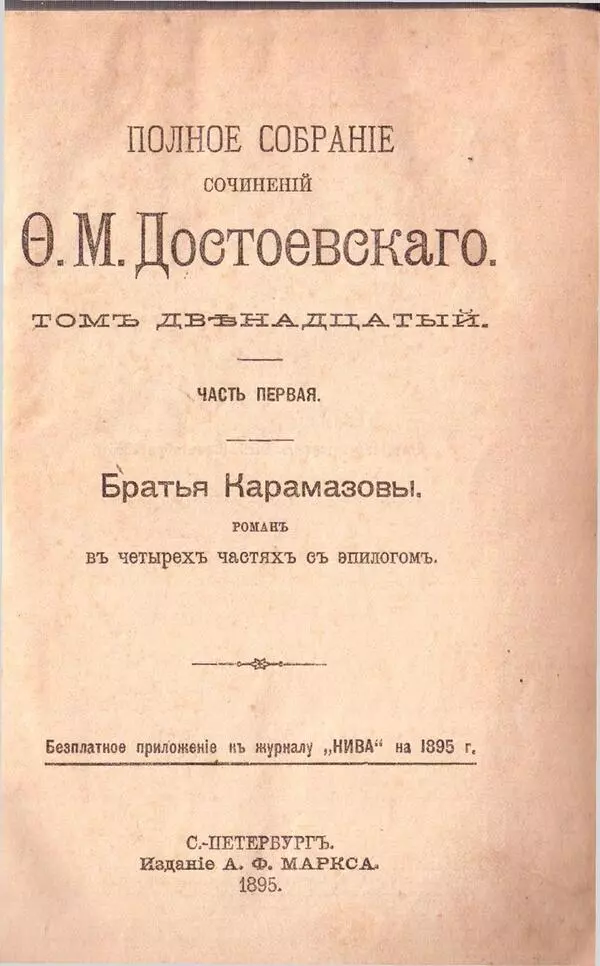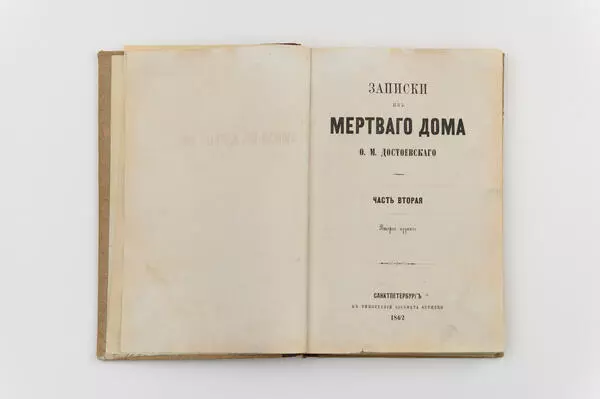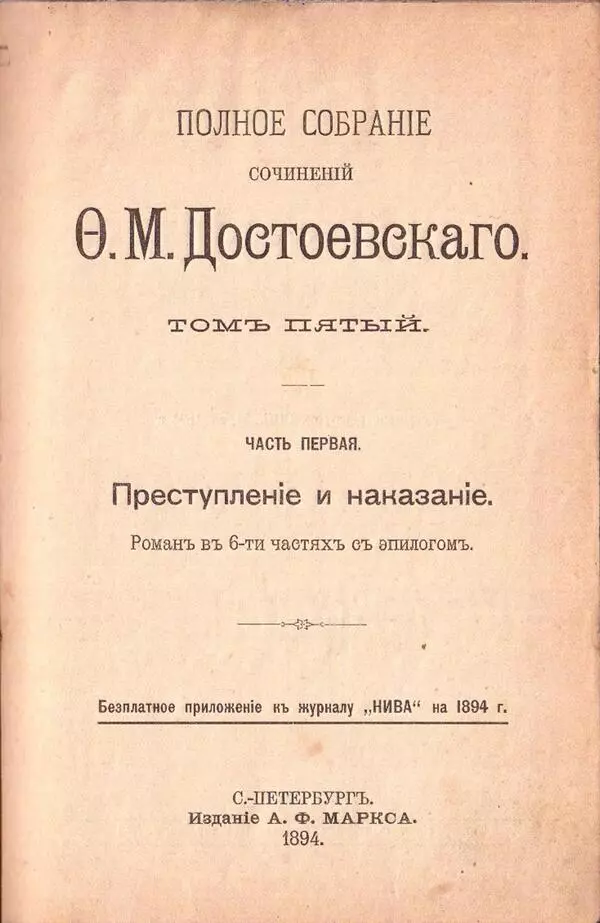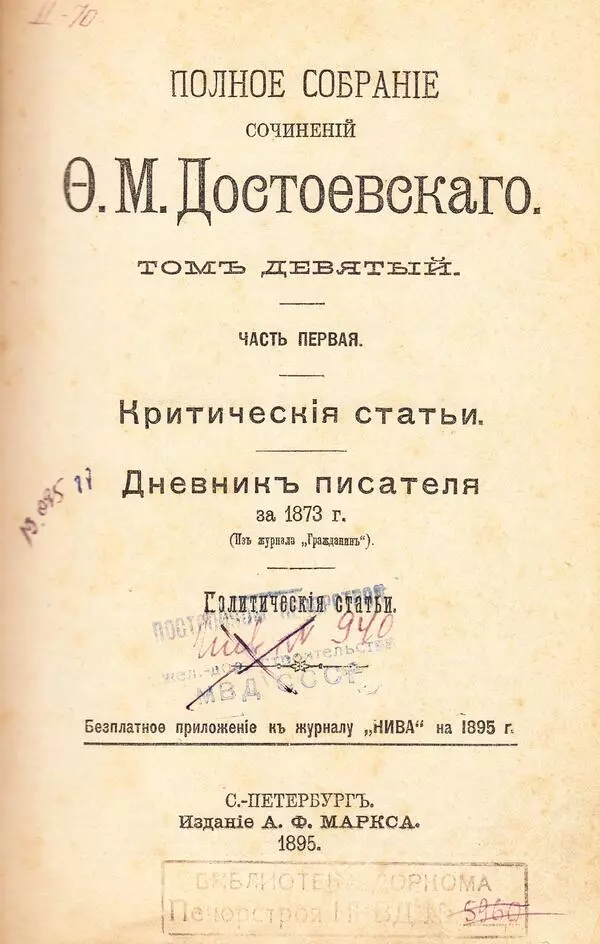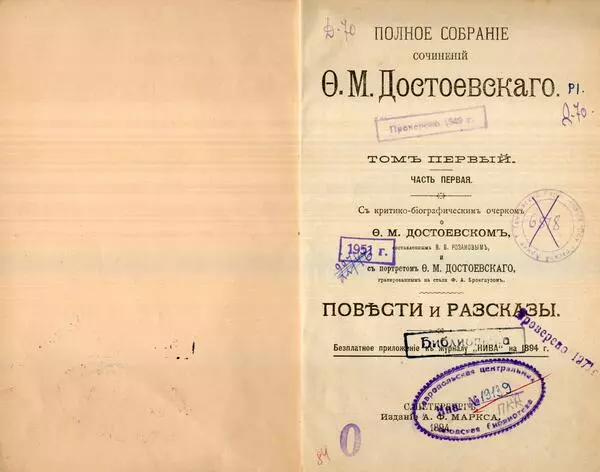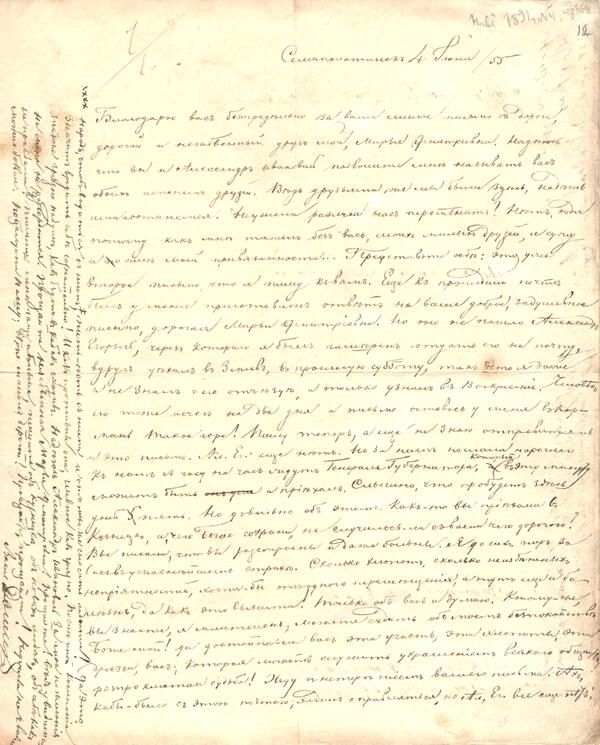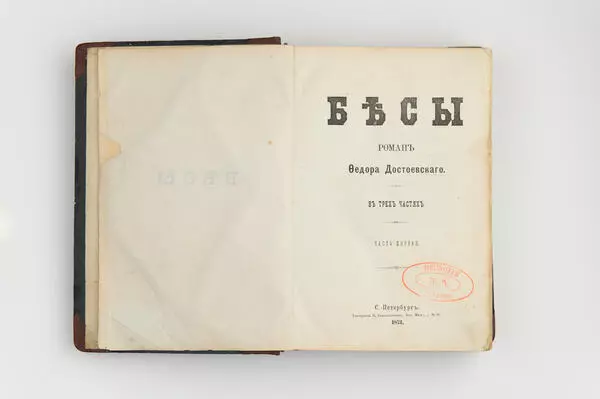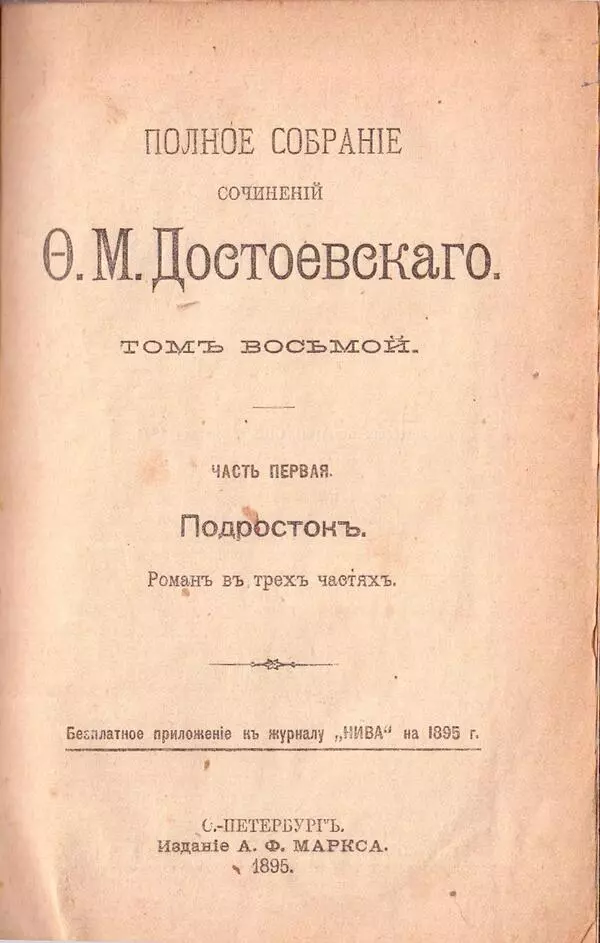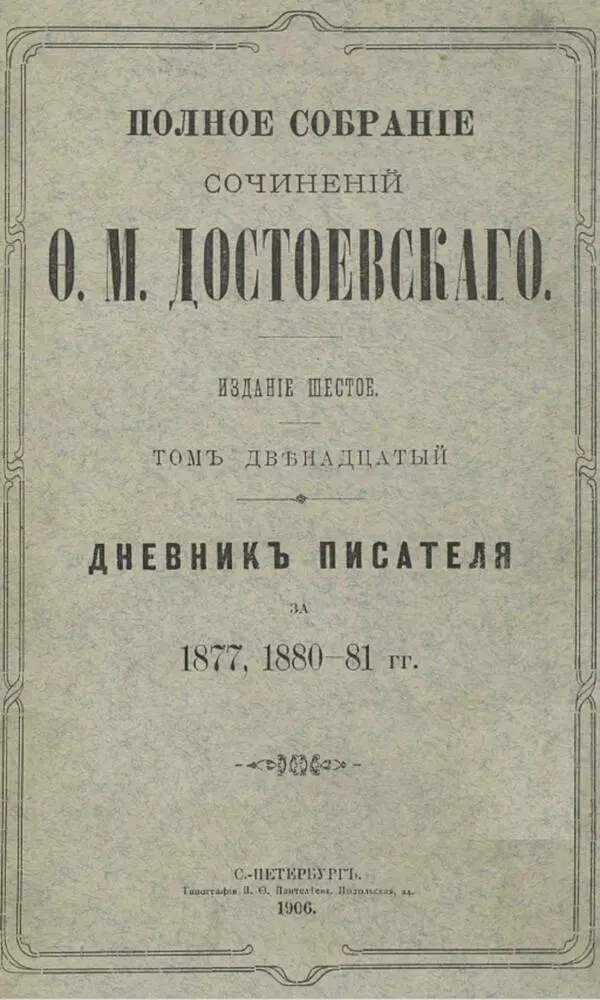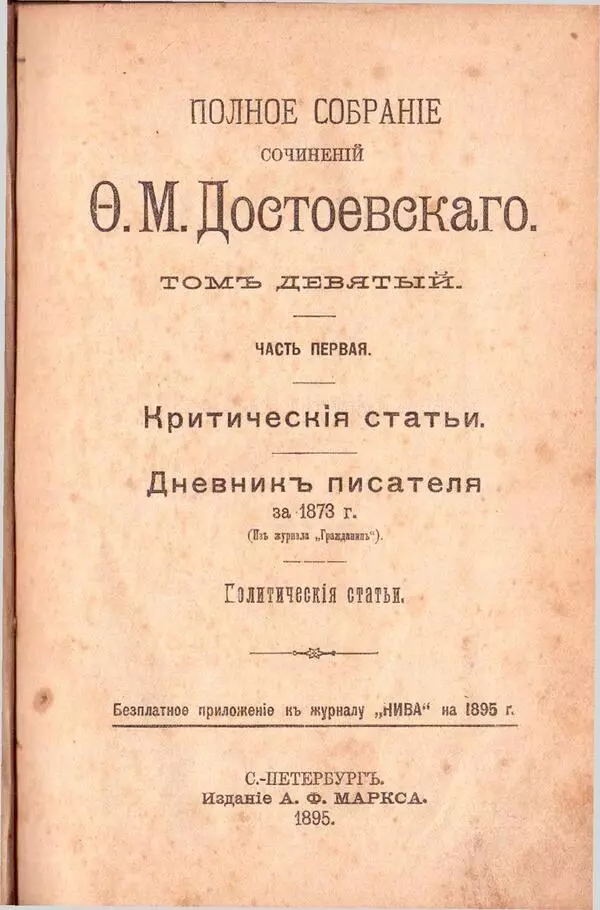The exhibition presents a rare in-life publication of DostoEvsky’s novel “Crime and Punishment”.
Late December 1876 (the title page says 1877) saw the fourth (second as a separate book) and the last in-life edition of the novel in two volumes. Limited to 2,000 copies, the edition is hard to find.
For the first time, Crime and Punishment was issued in parts in the RUssky VEstnik (Russian Chronicler) magazine throughout 1866. Dostoevsky wrote to publisher Mikhail Katkov on the novel’s idea,
‘The action takes place the current year. A young man expelled from the university <…> goes in for killing an old woman who is a titular counselor borrowing money at interest <…> In addition, my story contains a clue of the idea that the imposed legal punishment for a crime is much less frightening to the criminal than legislators think because in some measure he himself demands it on a moral level’.
Prior to the publication of the novel, Dostoevsky stipulated that ‘no editing should be done.’ However, as the printing progressed, a number of contradictions between the author and the conservative-minded magazine publisher MikhaIl Katkov emerged. Dostoevsky was forced to rewrite the fourth chapter of the fourth part and compromise on making a number of condensations throughout the novel. The original text did not survive remaining known only to the publishers.
In 1867, Crime and Punishment. The Novel in Six Parts and an Epilogue by Fyodor Dostoevsky. Revised edition’ was issued as a separate book. The edition underwent numerous stylistic arrangements and condensations which, however, did not affect the novel’s message or characters.
In 1870, the unchanged Crime and Punishment was included in the fourth volume of the collected edition of Dostoevsky’s works published by Fyodor Stellovsky. In 1877, the last in-life edition of the novel in two volumes was released. It was based on the text of the 1867 edition. The text included a great number of mistakes overlooked by both Dostoevsky himself and his wife Anna who proofread it. For example, the magazine edition and other in-life editions of the novel have a significant contradiction: one of the younger Marmeladov’s daughters is named Lidochka or Lenya in different editions. Probably, both are diminutives of the same name.
Late December 1876 (the title page says 1877) saw the fourth (second as a separate book) and the last in-life edition of the novel in two volumes. Limited to 2,000 copies, the edition is hard to find.
For the first time, Crime and Punishment was issued in parts in the RUssky VEstnik (Russian Chronicler) magazine throughout 1866. Dostoevsky wrote to publisher Mikhail Katkov on the novel’s idea,
‘The action takes place the current year. A young man expelled from the university <…> goes in for killing an old woman who is a titular counselor borrowing money at interest <…> In addition, my story contains a clue of the idea that the imposed legal punishment for a crime is much less frightening to the criminal than legislators think because in some measure he himself demands it on a moral level’.
Prior to the publication of the novel, Dostoevsky stipulated that ‘no editing should be done.’ However, as the printing progressed, a number of contradictions between the author and the conservative-minded magazine publisher MikhaIl Katkov emerged. Dostoevsky was forced to rewrite the fourth chapter of the fourth part and compromise on making a number of condensations throughout the novel. The original text did not survive remaining known only to the publishers.
In 1867, Crime and Punishment. The Novel in Six Parts and an Epilogue by Fyodor Dostoevsky. Revised edition’ was issued as a separate book. The edition underwent numerous stylistic arrangements and condensations which, however, did not affect the novel’s message or characters.
In 1870, the unchanged Crime and Punishment was included in the fourth volume of the collected edition of Dostoevsky’s works published by Fyodor Stellovsky. In 1877, the last in-life edition of the novel in two volumes was released. It was based on the text of the 1867 edition. The text included a great number of mistakes overlooked by both Dostoevsky himself and his wife Anna who proofread it. For example, the magazine edition and other in-life editions of the novel have a significant contradiction: one of the younger Marmeladov’s daughters is named Lidochka or Lenya in different editions. Probably, both are diminutives of the same name.




